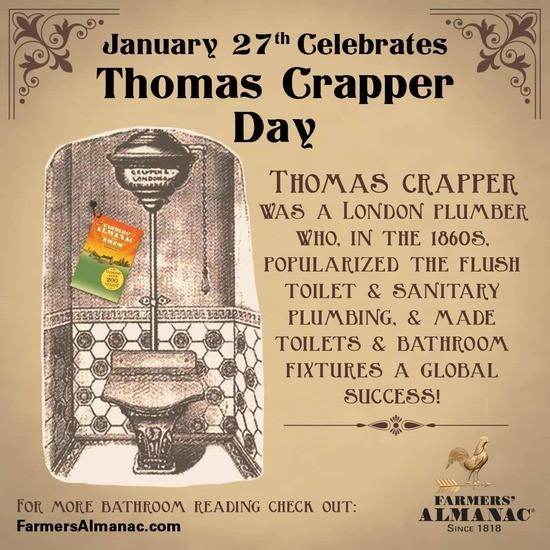Morning Open Thread. America doesn't use bidets. Makes me wonder why not.
Opinions as to the necessity of the bidet vary widely over different nationalities and cultures. In those cultures which use it habitually, such as in parts of Western, Central and Southern Europe, Eastern Asia and some South American countries such as Argentina, it is considered an indispensable tool in maintaining good personal hygiene. It is rarely used in sub-Saharan Africa and North America.
--wikipedia
I’ve been re-watching Agatha Christie’s Poirot.There’s an episode in which Detective Chief Inspector Japp has to room temporarily at Poirot’s flat.Japp encounters a bidet for the first time in his life, has no idea what it is for, and uses it to wash his face.Comedic moment, of course.Oh my god, that’s for your butt, not your face!!!!!
Morning Open Thread is a daily, copyrighted post from a host of editors and guest writers. We support our community, invite and share ideas, and encourage thoughtful, respectful dialogue in an open forum.
This is a post where you can come to share what’s on your mind and stay for the expansion.The diarist is on California time and gets to take a nap when he needs to, or may just wander off and show up again later.So you know, it's a feature, not a bug.
Grab your supportive indulgence(s) of choice and join us, please.And if you’re brand new to Morning Open Thread, then Hail and Well Met, new Friend.
Although I can’t imagine that anyone reading here doesn’t at least know what a bidet is and what it’s for, here’s a real quick expose’:
xxYouTube VideoI dunno, maybe it’s just because extra floor space and plumbing is required and thus extra expense, but still it seems strange that the bidet is such a rarity in American homes and public bathrooms.The only place I’ve ever encountered one here (I’ve never been to Europe) is in a hospital, and it was just a flip-down nozzle affixed to the back of the rim of a tankless toilet in the hospital shower room.

But bidets make total sense.Keep your hands away from poop, right?Paper is thus used only for drying after you’re clean.
If I had a bidet I’d never go back to using my hand “down there”, I can tell you that.
Urinals are another weird thing.Go into almost any men’s room in an American public restroom like in a restaurant or public library or business building and it will have at least one urinal, often several.But you’ll almost never find one in somebody’s home.Is it just because they’re yucky to clean?Sure, nobody wants to clean a urinal, but then who wants to clean a toilet in the first place?Regardless, it still has to be cleaned, and a urinal is actually easier to clean than a toilet.But I think I know the reason.Floor space real estate.Most bathroom business is just “#1”, so in a non-home building why take up all the room with partitioned stalls, which would cost way more money than the footprint required for a urinal.In the home, of course, you’re going to have a toilet no matter what and nowhere near the demand of a public building and so a urinal would just be superfluous and a whole lot of unnecessary additional cleaning.
The history of the modern flush toilet is a fascinating subject in itself.It goes back to the beginning of the 17th century (credit John Harington, not Thomas Crapper), but surprisingly it was not until near the end of the 18th century that Scottish inventor Alexander Cummings finally came up with the S-trap, or “goose neck”, which solved the problem of foul sewer gasses coming back up through the toilet by using a water seal.
But to give Thomas Crapper his proper due,
Thomas Crapper (baptised 28 September 1836; died 27 January 1910) was an English businessman and plumber. He founded Thomas Crapper & Co in London, a sanitary equipment company. Crapper held nine patents, three of them for water closet improvements such as the floating ballcock. He improved the S-bend plumbing trap in 1880 by inventing the U-bend. The firm's lavatorial equipment was manufactured at premises in nearby Marlborough Road (now Draycott Avenue). The company owned the world's first bath, toilet and sink showroom in King's Road. Crapper was noted for the quality of his products and received several royal warrants.
…
It has often been claimed in popular culture that the profane slang term for human bodily waste crap originated with Thomas Crapper because of his association with lavatories. A common version of this story is that American servicemen stationed in England during World War I saw his name on cisterns and used it as army slang, i.e., "I'm going to the crapper".
The word crap is actually of Middle English origin and predates its application to bodily waste. Its most likely etymological origin is a combination of two older words: the Dutch krappen (to pluck off, cut off, or separate) and the Old French crappe (siftings, waste or rejected matter, from the medieval Latin crappa).In English, it was used to refer to chaff and also to weeds or other rubbish. Its first recorded application to bodily waste, according to the Oxford English Dictionary, appeared in 1846, 10 years after Crapper was born, under a reference to a crapping ken, or a privy, where ken means a house.
And coming up:
Don’t forget your reading material.








